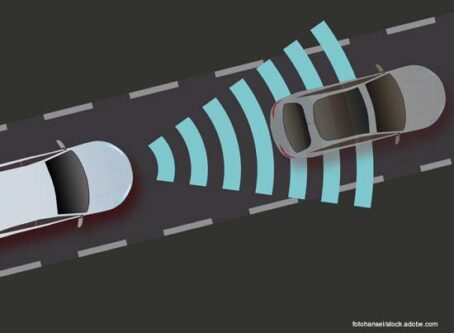OOIDA: Infrastructure, truck parking key to nation’s freight plan
The National Freight Strategic Plan must address deteriorating highway infrastructure, the truck parking crisis and overregulation, OOIDA told the U.S. Department of Transportation in recently submitted comments.
DOT posted a request for information regarding its National Freight Strategic Plan on Dec. 27. The comment period ended Feb. 10.
“As DOT prepares its National Freight Strategic Plan, we urge the Department of consider improvements to the nation’s transportation system that would increase efficiencies and alleviate costs for small-business truckers,” OOIDA wrote in formal comments signed by President and CEO Todd Spencer. “The NFSP must address deteriorating highway infrastructure that results in lost productivity and compensation for drivers. The plan also must prioritize fixing the nation’s truck parking crisis and address other institutional barriers, such as excessive detention time that can be mitigated through more practical federal policies.”
The first question in DOT’s request for information was, “What are the three most important challenges facing the U.S. freight transportation system?”
OOIDA’s response focused on problems regarding infrastructure, truck parking and overregulation.
Infrastructure
The OOIDA Foundation 2018 survey found that OOIDA members spend about $5,000 a year on repairs due to highway damage on poor road conditions. The American Transportation Research Institute estimates that the operational costs incurred by the trucking industry from traffic congestion were $74.5 billion or $6,478 per truck.
“One out of every 5 miles of highway pavement is in poor condition, and our roads have a significant and increasing backlog of rehabilitation needs,” OOIDA wrote. “Because of these poor infrastructure conditions, individual drivers lose thousands of dollars annually.”
Truck parking
OOIDA said that the lack of truck parking in the United States has reached the crisis stage.
“Professional drivers encounter truck parking shortages in every corner of the country,” OOIDA wrote. “Absent federal involvement, the problem will continue to worsen.
“Forcing truckers to spend excessive amounts of time searching for parking can be a serious safety concern for all highway users, but the current crisis can also create additional hazards for the motoring public. As a last resort, drivers who are unable to find adequate parking reluctantly park in hazardous roadside locations, such as the shoulder of highways and interstate exit ramps. This creates a dilemma for law enforcement of allowing a tired trucker to rest in a dangerous location or ordering them to relocate even if it means violating the hours-of-service regulations.”
OOIDA said that technology will not solve the problem and that expanding truck parking capacity must be a priority.
“The National Freight Strategic Plan should specifically focus on the construction of new rest areas and truck parking facilities, while also helping public entities convert existing spaces, such as inspection sites, weigh stations and closed rest areas, into truck parking locations,” OOIDA wrote.
Overregulation
Even though truck drivers are subject to more regulations and greater enforcement than ever before, crash rates have still been climbing, OOIDA said.
“OOIDA supports a federal approach that removes excessive burdens and seeks less intrusive alternatives that can enhance highway safety and improve working conditions for independent operators,” OOIDA wrote. “DOT should remove all the unnecessary regulations that have no impact on safety, including the 2017 electronic logging device mandate. The DOT must also continue pursuing much-needed hours-of-service reform.”
Improving freight transportation
OOIDA said an easy way to improve freight transportation in the United States is to understand the important role that truck drivers play.
“As DOT develops the National Freight Strategic Plan, the strategy must fully consider the critical role of commercial motor vehicle drivers within the nation’s transportation network,” OOIDA wrote. “OOIDA recommends that the National Freight Strategic Plan prioritizes infrastructure improvement, expanding truck parking capacity, and regulatory reform. This will result in safer and more efficient movement of freight.”
Other OOIDA activity on Capitol Hill:









